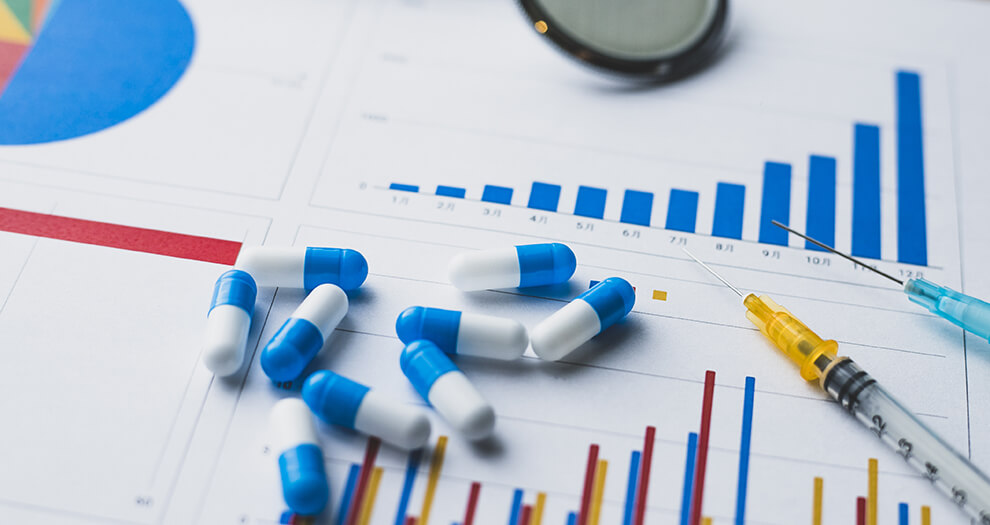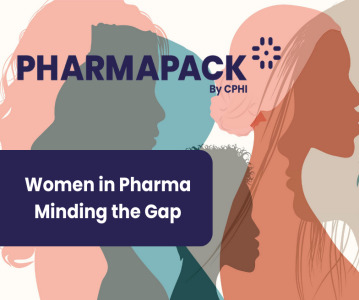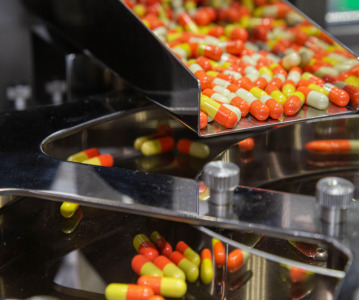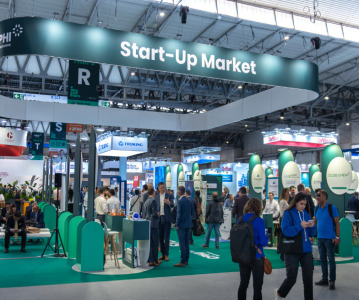Beyond the box: Device and packaging tech innovation vital for pharma

Our virtual CPHI Discover event (17th-28th May) is just around the corner, full to the brim with three main content tracks. Here, we explore the major trends in Drug Delivery and Packaging.
Innovation in the drug R&D lab is being matched in the delivery technology and packaging space.
Demand for more effective and patient-centric routes of administration is producing a new generation of administration devices. Similarly, rules designed to secure supply chains are driving packaging developers to do more with the space available.
Drug delivery and packaging
A drug is only effective if it can be delivered in a bioavailable form. And an effective drug can only become a successful product if it can be packaged in a way that it is protected, stable and secure.
For effective delivery the challenge is choosing the technology that works with the drug being developed. Fortunately for pharmaceutical companies there are multiple potential routes of administration and delivery technologies available.
In addition, there is a rich and diverse ecosystem of delivery device suppliers and contractors working to create technologies suited to the evolving needs of patients and the pharmaceutical industry.
Alternative routes
At present, for obvious reasons, vaccine delivery is a particularly active area of research. The vast majority of vaccine shots are administered via injection. However, patient aversion is driving technology developers to assess alternatives.
Mucosal delivery has emerged as a focus of innovation. According to a recent study (1) advances in the production of purified antigens, combined with novel biomaterials and nanotechnology have enabled many innovative mucosal vaccine trials.
Nasal delivery (2) is another major area of research. The nasal mucosa offers easy access to part of the immune system that can stimulate other mucosal sites (3). In addition, there is already substantial experience in nasal administration for local indications, like allergic rhinitis, and niche areas, such as pernicious anaemia and pain (4).
Technologies
Interest in auto-injection devices is also increasing in both the vaccines sector and the wider pharmaceutical industry.
Recent analysis (5) suggests the global market for such products will grow 17.9% from 2020 to 2025 driven by the growing prevalence of targeted therapies, the rising incidence of anaphylaxis and a shift towards self-administration.
The analysts also predict patent expiry for biologics will continue to provide growth opportunities as suppliers seek to use auto-injector devices to differentiate their products.
On-body delivery devices are another area of innovation. The drive to reduce healthcare costs by minimizing in-patient treatment for chronic conditions has intensified the focus on devices that can be used in an in-home setting.
Programmable, variable dose on-body injectors are an example. Recent analysis (6) by the US Center for Biosimilars suggested companies working in the space will use on-body devices to compete against both the originator product and other biosimilar rivals.
Drug innovation
The pharmaceutical industry’s shift from the development of small molecule drugs to larger molecule medicines and cell and gene therapies is also fuelling innovation in the delivery technology space. A recent article in Nature (7) suggested growth of the commercial markets for advanced therapies has forced industry to adapt technologies and to develop new solutions.
And much of the innovation is coming from the influx of smaller start-up organisations entering the technology space according to recent analysis (8).
Packaging
The pharmaceutical packaging sector, like the drug delivery technology industry, is characterised by a high level of R&D activity and often the drivers are similar.
For example, the pandemic-driven surge in vaccine R&D has significantly increased demand for glass vials. Indeed, early in 2020 (9) there were concerns the glass manufacturing sector lacked sufficient capacity to cater for both increased demand from the vaccine sector and the wider biopharmaceutical industry.
In response – and with government support – production of glass has increased (10). Companies have also started using new materials. According to one study (11) glass that does not contain boron – an element that can volitize during vial production leading to the formation of flakes – has increased markedly in recent months. In addition, the authors suggest, demand for borosilicate-free glass has fuelled growth of an ecosystem of manufacturers and distributors.
Supply chain security
Concerns about drug traceability are another major driver of innovation in the pharmaceutical packaging sector. The desire to secure supply chains and combat drug counterfeiting has prompted regulators in most major markets to introduce tracking requirements for drug packaging.
In the European Union, for example, the Falsified Medicines Directive requires (12) that most prescription medicines have both a unique identifier - a two-dimension barcode - and an anti-tampering device integrated into their packaging.
On the other side of the Atlantic, the US Drug Supply Chain Security Act (DSCSA) introduced similar measures (13). The law also requires compels the pharmaceutical and packaging sector – by 2023 (14)- to use packaging as part of a system able to detect and remove potentially harmful products from supply chains.
Other trends impacting the pharmaceutical packaging sector include patient demand for usability and compliance, the need to enhance the stability of medicines and those that maximize potential shelf life.
Efforts to minimize drug waste are also shaping the development of the packaging industry. According to a recent study (15) active sensing technologies applied to pharmaceutical packaging could provide an “effective way for reusing medicines.”
Similarly, the global trend to reduce use of plastic is being felt in the drug packaging field. The challenge, according to a recent study, will be to find replacement packaging materials and to adapt established supply chains in a cost effective and sustainable manner.
Register for CPHI Discover here and check out the agenda for details of upcoming webinars and podcasts
References:
- https://www.ncbi.nlm.nih.gov/pmc/articles/PMC7149853/
- https://www.tandfonline.com/doi/abs/10.1080/17425247.2020.1714589
- https://www.ncbi.nlm.nih.gov/pmc/articles/PMC5287317/
- https://www.aptar.com/resources/nasal-drug-delivery-past-present-and-future-perspectives/
- http://www.globenewswire.com/news-release/2020/12/15/2145095/0/en/The-global-autoinjectors-market-is-projected-to-reach-USD-104-9-billion-by-2025-from-USD-46-0-billion-in-2020-at-a-CAGR-of-17-9-from-2020-to-2025.html
- https://www.centerforbiosimilars.com/view/investigators-measure-pegfilgrastim-biosimilar-savings-potential
- https://www.nature.com/articles/s41551-021-00698-w
- https://www.startus-insights.com/innovators-guide/5-top-emerging-drug-delivery-startups-impacting-the-pharma-sector/
- https://www.businessinsider.fr/us/coronavirus-vaccine-glass-vial-shortage-could-delay-global-rollout-2020-5
- https://www.biopharminternational.com/view/increases-in-manufacturing-capacity-target-vial-and-syringe-shortages
- https://www.fortunebusinessinsights.com/pharmaceutical-glass-packaging-market-104710
- https://www.ema.europa.eu/en/human-regulatory/overview/public-health-threats/falsified-medicines-overview
- https://www.fda.gov/drugs/drug-supply-chain-security-act-dscsa/are-you-ready-drug-supply-chain-security-act
- https://econtrolsystems.com/blog/fda-track-and-trace-law-pharmaceutical-supply-chain#:~:text=The%20FDA%20signed%20the%20Drug,to%20the%20safety%20of%20patients.
- https://www.ncbi.nlm.nih.gov/pmc/articles/PMC7355753/

Related News
-
News Pharmapack Awards 2024 Patient-Centric Design Award Winner – Dr Ferrer BioPharma
The 2024 Pharmapack Awards celebrated the best in innovation and design for the pharmaceutical packaging and drug delivery industry on January 24, 2024. -
News Women in Pharma: Minding the Gap at Pharmapack 2024
2024 marks the first year Pharmapack will host a Diversity track dedicated to bridging the gap within the pharmaceutical packaging and drug delivery sector. The track includes a panel discussion on 'Enabling Diversity in the Workplace,' focused... -
News Pharmapack Awards 2024 - Celebrating Packaging and Drug Delivery Innovation
The 2024 Pharmapack Innovation Awards ceremony celebrated the best in pharmaceutical packaging and drug delivery innovation at all levels. The awards were held on January 24, 2024 at the Paris Expo Porte de Versailles. -
News Pharmapack 2024 - From the Floor
Paris once again welcomes Europe’s leading trade show in pharmaceutical packaging and drug delivery innovation. Join our content team as Pharmapack 2024 opens its doors to leading experts and innovators in pharmaceutical packaging and drug delive... -
News CPHI Barcelona 2023: Partnering for Success – Managing Outsourcing Relationships to Optimise Manufacturing Operations
During CPHI Barcelona 2023, insightful content sessions offered attendees the chance to explore trending topics with expert speakers and panellists. Here, we summarise what the pharma industry and supply chain are talking about the most. -
News CPHI Barcelona 2023: Loading Potential – Artificial Intelligence for Pharma Manufacturing
During CPHI Barcelona 2023, insightful content sessions offered attendees the chance to explore trending topics with expert speakers and panellists. Here, we summarise what the pharma industry and supply chain are talking about the most. -
News Pharmaceutical industry supports COP28 health stance in joint statement
As COP28 takes place over this week in Dubai, UAE, several bodies in the pharmaceutical and health industries have come together to announce support of key movements in sustainability in the sector, and to recognise sustainability as a health issue.&nb... -
News CPHI Podcast Series: Start-ups take centre stage at CPHI Barcelona
The first episode of the CPHI Podcast Series since we attended CPHI Barcelona in October covers the Start-up market at the event, with expert Matthew Wise joining Editor Lucy Chard to discuss the event.
Position your company at the heart of the global Pharma industry with a CPHI Online membership
-
Your products and solutions visible to thousands of visitors within the largest Pharma marketplace
-
Generate high-quality, engaged leads for your business, all year round
-
Promote your business as the industry’s thought-leader by hosting your reports, brochures and videos within your profile
-
Your company’s profile boosted at all participating CPHI events
-
An easy-to-use platform with a detailed dashboard showing your leads and performance





.png)

